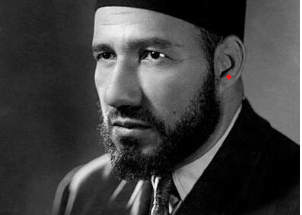introduction
Imam al-Shafi’i, one of those colossal figures in the annals of Islamic history, occupies a most important niche in the development of Islamic jurisprudence. He is the founder of the Shafi’i school of law, one of the four main Sunni schools. His contributions to scholarship gave form and specificity to the discipline of fiqh or Islamic jurisprudence. Born in Gaza in 767 CE, a year after the death of Imam Abu Hanifa, his life and works epitomize a peculiar blending of tradition and innovation that provided a legal methodology for many Muslims, still applied worldwide to this day.
Early Life and Quest for Knowledge
Al-Imam Muhammad ibn Idris al-Shafi’i is blessed to have been born in Gaza, Palestine, during the middle of the 7th century, probably in 767 CE, to a noble family that could trace its ancestry back to the Quraysh tribe of the Prophet Muhammad (peace be upon him). His ancestry connected him with the Banu Muttalib, a branch closest to the Prophet’s family, and endowed him with spiritual and cultural legacy of distinction. He became an orphan at a very young age and moved with his mother to Mecca, where he grew up with great financial constriction.
In spite of the struggles of poverty, al-Shafi’i was so intellectually gifted even as a boy. At just seven years old he had memorized the Qur’an, and he came to be known as an elegant and prodigiously talented young man. Growing up immersed in the Arabic language, he became proficient in classical poetry and prose alike, which in later years contributed richly towards his ability to state complicated legal arguments.
He started his early education in Mecca, the city which enjoys a cultural legacy of learning. There he studied under great teachers about doctrines of Islamic jurisprudence and exegesis of the Qur’an. A longing for knowledge prompted him to undertake wide travels in the Muslim world to seek wisdom from the leading scholars of his time.
Upon reaching Medina, he gathered around him a group of scholars and initiated his polite and austere learning under Malik ibn Anas, the venerable scholar in Maliki doctrine. Al-Muwatta, written by Imam Malik, detailed the teachings of the Prophet and knowledge concerning interdisciplinary practicalities–none escape its seriousness and depth of ideas.
Later, he would travel to Iraq, where he established touch with the Hanafi school and naturally fell under the influence of its emphasis on reason and analogy. Through these meetings with varying schools of thought on jurisprudence, he could cultivate a fine balance between the literalism of the scriptures and the rationality of legal arguments.
The whole of al-Shafi’i’s-term developmental journey culminated in his articulating Usul al-Fiqh (Principles of Islamic Jurisprudence), a revolutionary theoretical system that neatened together what he had inherited from his masters. This theoretical system laid down the basis for his school and earned him a place among the most renowned jurists of Islamic history.
Shafi’i Methodology: Usul al-Fiqh
Among the most revolutionary contributions of Imam Muhammad ibn Idris al-Shafi’i to Islamic jurisprudence was the masterly laying down of Usul al-Fiqh (Principles of Islamic Jurisprudence). This theoretical framework was a true Renaissance in the study and application of Islamic law and a schematic foundation to derive legal rulings. It combined, tempered, and harmonized the different schools of thought in an approach assured of comparison, clarity, and precision in Islamic legal practices.
Key Components of Usul al-Fiqh
In the first instance, Imam al-Shafi’i formulated the principles that govern the interpretation and application of Islamic law in his foremost expository work, Al-Risala. These include:
1. The Qur’an as the Principal Source of Law
Al-Shafi’i reiterated the Qur’an as the hope supreme and unalterable source of divine will-the text upon which all legal pronouncements are grounded and into which every inference drawn from Islamic law has to fit.
2.The Sunnah as a Complementary Source
Imam al-Shafi’i elevated the Sunnah alongside the Qur’an. He argued that Sunnah serves both as an explanation and a practical implementation of the Qur’an and, constantly explaining terms of its very abstract principles. He also insisted on the authentication of hadith with the purpose of expressly asserting the criterion of their reliability to ensure correctness of its ruling.
3. Ijma’ (Consensus)
Al-Shafi’i recognized the authority of ijma’ or a consensus among the scholars as binding sources of law. He also considered ijma’ as the manifestation of the common wisdom of the Muslim community and assurance against individual error in interpreting the Qur’an and Sunnah.
4. Qiyas (Analogical Reasoning)
In cases where direct guidance from the Qur’an or Sunnah was lacking, al-Shafi’i opens up qiyas, or analogical interpretation, for issuing a particular ruling. While again using given rules on various problems, qiyas would guarantee the continuation of validity and adaptation of Islamic law without affecting its cornerstones.
Balancing Tradition and Reason
The revolutionary methodology of Al-Shafi’I struck a balance between absolute literalism of the text and rational analysis. He championed the supremacy of Qur’an and Sunnah, all the while being fully aware of the necessity of human intellect to cope with dynamic societal needs. By establishing principles for the use of analogy and consensus, he enabled the scholars to cope with new challenges, always cleaving unto divine revelation.
Such a balance enabled the Shafi’i school to reconcile various methods within Islamic jurisprudence. Al-Shafi’i bridged the gaps between the traditionalist methodology of the Maliki school, which was customarily based most upon local mores and customs, and the rationalist approach of the Hanafi school, which was primarily based upon analogical reasoning.
Innovations in Hadith Authentication
Perhaps the most important contribution al-Shafi’i made to Islamic thought was to assert the authenticity of the hadith. According to him, only verified and properly sourced traditions should constitute legal proof. This assertion greatly influenced the science of hadith, resulting in the compilation of two significant works, these being Sahih al-Bukhari and Sahih Muslim.
With the emphasis on the authenticated Prophetic traditions, al-Shafi’i ensured that Islamic law took off from the very teaching of the Prophet Muhammad (peace be upon him), without the danger of weak or fabricated narrations.
Impact of Usul al-Fiqh
Imam al-Shafi’i’s codification of Usul al-Fiqh established a template through which Islamic jurisprudence has been delivered to be of universal use by all Sunni schools of thought. His methodology cleared fuzzy approaches among dogmatic exaltations found up to that time whilst practiced and interpreted diversely.
The principles introduced by al-Shafi’i provide a guide for scholars and jurists in deriving their opinions in Islam through a synthesis of ideas emanating from Qur’an and Sunnah with articulated human reasoning.
Imam al-Shafi’i’s Usul al-Fiqh not only shaped the Shafi’i school of thought but also greatly affected the sound establishment of Islamic jurisprudence. His fastidious manner, analytic energy, and almost religious devotion continue to serve as a beacon toward renewal ever since men started to brainstorm the problem of reconciling tradition with contemporary humanist demands.
The Imaamu Shafi’i’s Death
Imam al-Shafi’i, a renowned Islamic scholar and founder of the Shafi’i school of jurisprudence, died on the last day of Rajab in 204 AH (820 CE) in Fustat, Egypt, at the age of fifty-four. All his life he dedicated himself to attaining knowledge; nevertheless, it was replete with trials and tribulations, both personal and professionally enlightening.
Later in life, this acute affliction constrained him to suffer from a chronic illness, often viewed by most as hemorrhoidal disease or some related degenerative condition. This illness produced intense pain in him and weakened him physically. Nevertheless, he continued teaching, writing, and debating to the end. He sat out his last days in Egypt, there revolutionizing his legal methodology and extensively propagating his ideas. Yet Egypt, too, proved a desert for his alternate views which ignited scholarly dissent with local scholars, particularly the followers of Imam Malik. This seal was having internally scuffle with his declining health turning him under the pressure.
At the time of his death, Imam al-Shafi’i was laid to rest at the City of the Dead (Al-Qarafa Cemetery) in Fustat, where his tomb till today remains a sanctuary for the Muslims worldwide. Sultan al-Kamil, a ruler of the Ayyubid dynasty, placed a dome over his grave as a monument to his lasting legacy. Even according to the veneration of Allah’s Messenger, were he to be judged on his deathbed this contended whether the purity of Islam, theology, and ethics would ineviably affect his afterlives.
Circumstances of His Death
1.Disease and Hardships:
In his later years, Imam al-Shafi’i suffered from various diseases thought by some historians to have been hemorrhoid or other disabling diseases. He, however, continued to teach, write, and contribute to scholarship to the very end.
2. Conflict and Struggles:
Life in Egypt was not without its periods of disturbance. Some of his views on jurisprudence and theology brought him disagreement with the local scholarship. Such a situation, coupled with his own physical suffering, most probably put so much strain on his health.
Burial and Legacy
- Imam al-Shafi’i was buried in the City of the Dead, a cemetery known as Al-Qarafa in Fustat, Egypt. His grave has remained a place of respect and visitation for Muslims around the world to date.
- A notable dome over his grave was later built by Sultan Saladin’s nephew, Sultan Al-Kamil, out of recognition for the monumental works of Imam al-Shafi’i in Islamic knowledge.
Final Words and Reflections
Imam al-Shafi’i was deeply aware of his mortality. His writings reflect a profound spirituality and humility before Allah. One of his famous lines of poetry, reflecting on his life, is:
“To Allah belongs my soul, and to Him is my return;
My body is in a grave, but my deeds accompany me.”
Another famous couplet:
“When my heart became hardened, and my paths became narrow,
I made my hope a stairway to Your forgiveness.”



